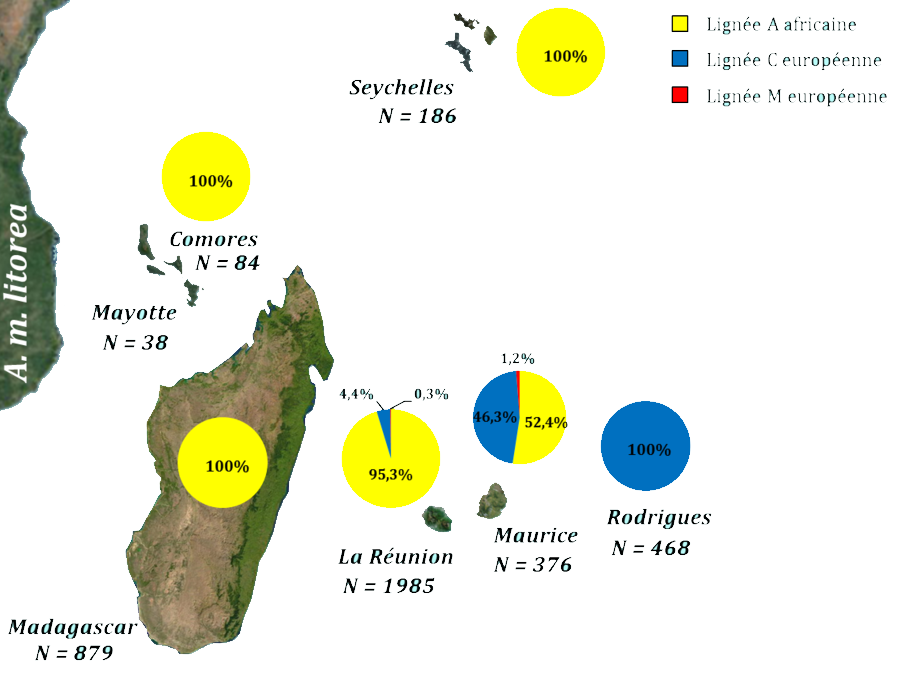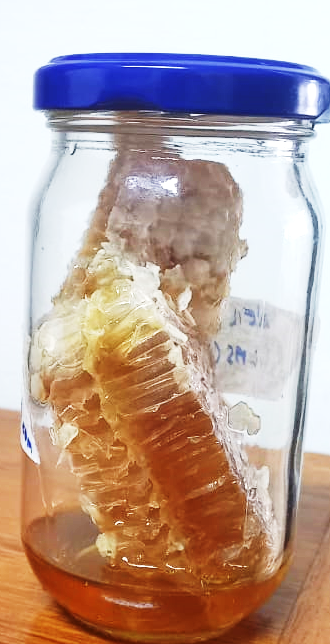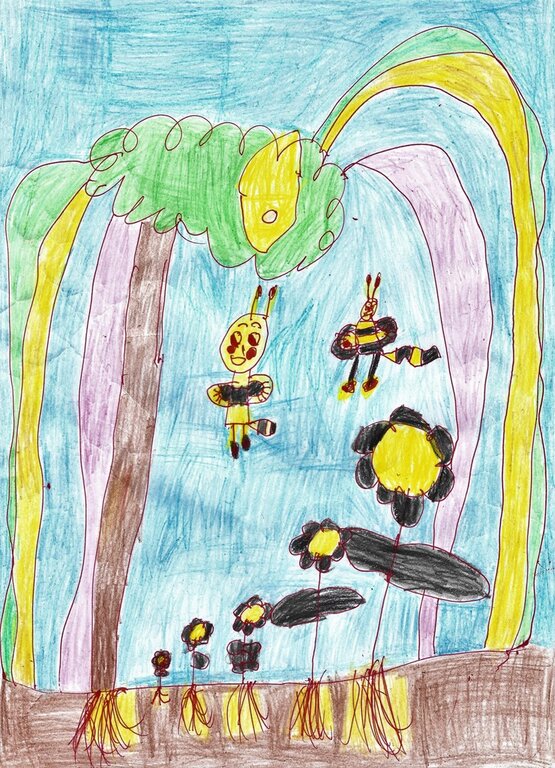It is still unknown as to when bees started populating the islands of the Seychelles, what is sure is that bees have been on the islands for quite some time. Genome analysis carried out in the 2010’s, later in the article shows just that. With wild bees being prevalent on all the inner islands of the Seychelles, records shows that in the 1980’s the Seychelles government of the time decided to import queens from the European honey bees (Apis mellifera), the most common of all honeybees. Reasons for their introduction is unclear, we would assume from these research, they are known for their ability to adapt to different ecosystems and for their honey making abilities. It shows also that honeybees were imported from amongst the regional islands.
Genealogy of the local bees
In the 2010’s, researchers from La Reunion and Madagascar came together, assembled a team, and embarked on a research to conduct an inventory on the honeybees population in the islands of the region. They wanted to analyze the genetic diversity and identify the different subspecies that can be found in the region. Many of the findings can be found in the Article-Honeybees of the Indian Ocean Islands: a diversity that must be preserved (by Jaëla Devakarne I Andrew Hobson)
From the three main islands of Seychelles, Mahe, Praslin and la Digue, 186 samples were taken altogether; put into the collective batch for the research. Interesting bits came out from these research.

Mapping of genetic lineages in the islands of the SWIO (Source: Honeybees of the Indian Ocean Islands: a diversity that must be preserved (by Jaëla Devakarne I Andrew Hobson) Article)
Even though introduced in the 80’s, little to no traits of the European honeybees were found in DNA of the Seychelles honeybees in the collected samples. As seen above in yellow from the samples, all the Seychelles honeybees had MDNA, which originates from the African lineage. They were mainly from the sub species Apis mellifera unicolor, which is endemic to the island of Madagascar. It is a mystery, but plausible, that somehow, somewhere in the echelons of history before passing sailors were even thinking of settling on the uninhabited islands of The Seychelles, the honeybees made their way from there to the Seychelles.
From observations made by local beekeepers, the phenotypes of the local bees in general, gives a whole range of bees, from totally black bees to the yellow black stripes ones.
Tropical Heat and Insects
Located four (4) degrees south of the equator, in The Seychelles inner islands, you are getting a typically hot, humid, occasionally damp tropical climate. It is an insect dreamland. Many are fascinated by the amount and variations in types of insects found in these islands. As mentioned in part one, a small tropical island nation that imports practically everything including agricultural and food products, even with strict regulations, is susceptible to getting an invasion of new insects.
Varroa mites are still not to be found on the islands, as is, the small hive beetle. That is still great news for the local bees. However over the decades, various other insects have found their way into Seychelles, e.g the hairy caterpillar. Because of the damp tropical climate, dengue fever through mosquitoes makes its seasonal occurrence as well.
Pesticides and Bees
The way of dealing with the insect’s invasion, and the seasonal dengue epidemics is usually through pesticides spraying on properties and in the surrounding communities. Sometimes spraying is done over large areas that covers fruit trees, flowers and everything else. It is quick and efficient. It is however a tradeoff. Stopping the spread of new invasive insects and mosquitoes can have a detrimental effect on bees and beekeepers. This bring about an ongoing debate about pesticides, their frequency, types, and uses. From the stakeholders and researchers they all speak of a need for further research and observations are needed.
A study published in 2018, Detection of pesticide residues in selected bee products of honeybees colonies in a preliminary study from Seychelles Archipelago showed traces of pesticides in the honey. Twenty one (21) samples were taken on twenty one sites over the April 2017 period on the three main islands of Mahe, Praslin and La Digue.. 100 % samples had traces of pesticides; albeit negligible traces and residues. Discussing data from over five (5) years ago does bring forward the argument for investments firstly thorough research, monitoring and analysis of data over time. Developing the honey industry without thorough consistent scientific data being produce will give the industry less credibility.
The road to standardization, role of SBS
This is where the Seychelles Bureau of Standards (SBS) comes in. In an insightful conversation with the Deputy Ceo Dr. Sreekala Nair and Chemist Cliff Barra from the Seychelles Bureau of Standards, the national body that has as its core activities, promoting standardization and conformity assessments in the country.
Seychelles is on its way to adopting the necessary international standards for the honey industry through SBS in relation to its core role. From the standard side of the industry, starting in 2021 it has had to accelerate the process exponentially. Gradually new equipment for testing has arrived, training of analysis experts in the honey field overseas had to be done. Through SBS technical abilities and their trainings, they are now edging closer to being able to doing quality testing of parameters in the honey and honey bees; especially its medicinal properties. Some examples are also in knowing the maturity of the honey, freshness of the honey; identifying if there are adulteration of the honey.
This is a plus for the local honey producers who want to explore the international market and also check their local honey quality in the near future. Apart from this standardization system and conforming to international standards, this helps in scientific research and evidence. A research and development industry is also now formed out of the industry. Its early times but fascinating times, if SBS can continuously procure new equipment for testing other parameters in the honey and expands its capacity building.

Existing Equipments from SBS
Whats on the Seychelles honey market?
Moving around on all the islands, and in almost all shops, you are bound to a find honey, from various companies, all imported. Yes, the market is full of imported honey. Where is the local honey? They are around, in local markets, a few shops, bought through word of mouth mostly, but they are not as widespread as the imported ones. Selling from a range of about 35 USD per kg to above 100 USD per kg, it is a pricey commodity on the local market hence the flooding of the market with the way cheaper imported honey. This is what the local beekeepers want to show, the differentiation in the products not just in the prices. The quality of the honey has to be tested and verified and with the developments happening at SBS, this is about to happen regularly now.
The Global Honey Industry
With a global markets size of about 8 to 9 billion USD in 2021, you will find a whole range of honey based products. Monofloral, polyfloral, organic, raw, adulterated, blended, there so many honey related products out there on the market, that the marketing is just as deliberate in attracting potential consumers. It leaves it up to consumers out there to understand, gather knowledge in what exactly they are buying.
Seychelles is assessing what approach it will come with to better harnessing the potential of its Seychelles honey internationally, made by the hardworking local honeybees.
Medicinal, niche organic honey route
There is an increase in honey uses in pharmaceutical products over the last decade in the global market. The Covid 19 pandemic has also shed light on honey, for its medicinal properties in dealing with respiratory tract infections and other new research with the inclusion of honey.
The top standard around for honey is the Manuka Honey. A monofloral honey, honeybees in the area forage only on the Manuka bush’s flowers in New Zealand. Some of the locations are even kept as a secret. Scientific evidence have shown that Manuka honey has many anti cancerous properties, hence its very high value.
Taking the monofloral route, in California State, in the middle of a marijuana plantation, you have bees that forage only on its flowers and now you have Cannahoneytm, a monofloral honey as well. As mentioned in Part 1, beekeepers has observed local honeybees foraging on one type of flowers as well, namely, Albizia, Cinnamon, Citrus trees and observed the difference in the texture of the honey produced. SBS will be key in unlocking these potentials with scientific evidence.

Honeycomb Sample
Assessing Seychelles Honey Quality
Preliminary results of phytochemicals tests, for medicinal properties, shows Seychelles honey with results above many of those niche honeys out there on the global market according to SBS Mr. Barra. The potential to get it to the niche honey level is there and it seems, this is the pathway the industry and the government is aiming for in its development.
Bees epitomize the words, work ethic. The kilometers they have to cover in a day, moving from flower to flower, their role in the ecosystem, their produce, honey, their wax, its fragile state, Seychelles has something of real intrinsic value given to them by nature. It is a field that definitely have a large scope for many types of research to be conducted; observations, continuous scientific research, product development and assure its sustainability, in letting the bees work in a safe natural environment that will keep them producing the goods as well, season after season.
Have a bee thought today




